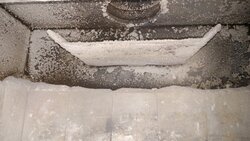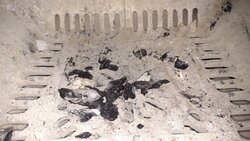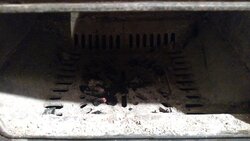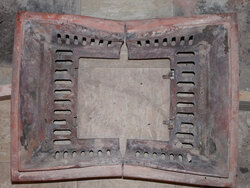I'm hoping that I get the correct intersection of knowledge here. I feel as though on NEPA Crossroads, the prevailing opinion would simply be "don't be an idiot, burn coal". I want to utilize the woodlot behind my hose, however; so here I am.
So I've posted here in the past about my ownership of a wood/coal combo Penn Royal (pictured below). The baffle on this one is present, but quite small. I've read numerous places that a good way to modify an older stove to squeeze better performance from them is to add/extend the baffle. Over the weekend and into this week, I had a small amount (200-300 pounds) of nut coal. I burn down two loads of wood by mid afternoon and had a nice (wood) coal bed, and began to burn the coal. After re-learning my stove for a day or two, I've decided that the black rocks will keep me much warmer when temperatures go below a daytime high of about 25 degrees. This is mostly due to my ability to keep the stove at about 650 degrees all through the night, impossible with wood.
I say all of this to ask the question: Can I make the baffle bigger without losing the ability to burn coal should I want to do so? I understand that I would be better served (burning wood) with a new stove, and I have one in my sights, and will have one in a few years. Extending the baffle will be a no-cost mod, however, as my dad can make it with scrounged steel and likes doing this sort of thing.
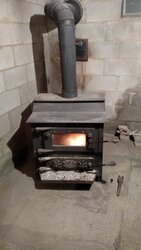
So I've posted here in the past about my ownership of a wood/coal combo Penn Royal (pictured below). The baffle on this one is present, but quite small. I've read numerous places that a good way to modify an older stove to squeeze better performance from them is to add/extend the baffle. Over the weekend and into this week, I had a small amount (200-300 pounds) of nut coal. I burn down two loads of wood by mid afternoon and had a nice (wood) coal bed, and began to burn the coal. After re-learning my stove for a day or two, I've decided that the black rocks will keep me much warmer when temperatures go below a daytime high of about 25 degrees. This is mostly due to my ability to keep the stove at about 650 degrees all through the night, impossible with wood.
I say all of this to ask the question: Can I make the baffle bigger without losing the ability to burn coal should I want to do so? I understand that I would be better served (burning wood) with a new stove, and I have one in my sights, and will have one in a few years. Extending the baffle will be a no-cost mod, however, as my dad can make it with scrounged steel and likes doing this sort of thing.



